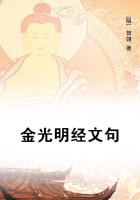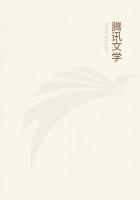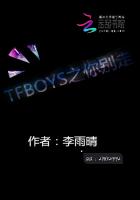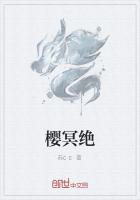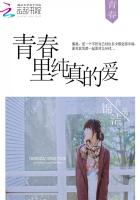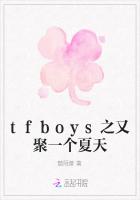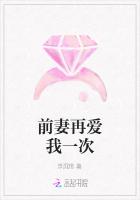Therefore the being which has just been destroyedthe so-called Deathmust be supposed to be endowed with a vivifying and quickening influence, which it can communicate to the vegetable and even the animal world. This ascription of a life-giving virtue to the figure of Death is put beyond a doubt by the custom, observed in some places, of taking pieces of the straw effigy of Death and placing them in the fields to make the crops grow, or in the manger to make the cattle thrive. Thus in Spachendorf, a village of Austrian Silesia, the figure of Death, made of straw, brushwood, and rags, is carried with wild songs to an open place outside the village and there burned, and while it is burning a general struggle takes place for the pieces, which are pulled out of the flames with bare hands. Each one who secures a fragment of the effigy ties it to a branch of the largest tree in his garden, or buries it in his field, in the belief that this causes the crops to grow better. In the Troppau district of Austrian Silesia the straw figure which the boys make on the fourth Sunday in Lent is dressed by the girls in woman's clothes and hung with ribbons, necklace, and garlands. Attached to a long pole it is carried out of the village, followed by a troop of young people of both ***es, who alternately frolic, lament, and sing songs. Arrived at its destinationa field outside the villagethe figure is stripped of its clothes and ornaments; then the crowd rushes at it and tears it to bits, scuffling for the fragments.
Every one tries to get a wisp of the straw of which the effigy was made, because such a wisp, placed in the manger, is believed to make the cattle thrive. Or the straw is put in the hens' nest, it being supposed that this prevents the hens from carrying away their eggs, and makes them brood much better. The same attribution of a fertilising power to the figure of Death appears in the belief that if the bearers of the figure, after throwing it away, beat cattle with their sticks, this will render the beasts fat or prolific. Perhaps the sticks had been previously used to beat the Death, and so had acquired the fertilising power ascribed to the effigy. We have seen, too, that at Leipsic a straw effigy of Death was shown to young wives to make them fruitful.
It seems hardly possible to separate from the May-trees the trees or branches which are brought into the village after the destruction of the Death. The bearers who bring them in profess to be bringing in the Summer, therefore the trees obviously represent the Summer; indeed in Silesia they are commonly called the Summer or the May, and the doll which is sometimes attached to the Summer-tree is a duplicate representative of the Summer, just as the May is sometimes represented at the same time by a May-tree and a May Lady. Further, the Summer-trees are adorned like May-trees with ribbons and so on; like May-trees, when large, they are planted in the ground and climbed up; and like May-trees, when small, they are carried from door to door by boys or girls singing songs and collecting money. And as if to demonstrate the identity of the two sets of customs the bearers of the Summer-tree sometimes announce that they are bringing in the Summer and the May. The customs, therefore, of bringing in the May and bringing in the Summer are essentially the same; and the Summer-tree is merely another form of the May-tree, the only distinction (besides that of name) being in the time at which they are respectively brought in; for while the May-tree is usually fetched in on the first of May or at Whitsuntide, the Summer-tree is fetched in on the fourth Sunday in Lent. Therefore, if the May-tree is an embodiment of the tree-spirit or spirit of vegetation, the Summer-tree must likewise be an embodiment of the tree-spirit or spirit of vegetation. But we have seen that the Summer-tree is in some cases a revivification of the effigy of Death. It follows, therefore, that in these cases the effigy called Death must be an embodiment of the tree-spirit or spirit of vegetation. This inference is confirmed, first, by the vivifying and fertilising influence which the fragments of the effigy of Death are believed to exercise both on vegetable and on animal life; for this influence, as we saw in an earlier part of this work, is supposed to be a special attribute of the tree-spirit. It is confirmed, secondly, by observing that the effigy of Death is sometimes decked with leaves or made of twigs, branches, hemp, or a threshed-out sheaf of corn; and that sometimes it is hung on a little tree and so carried about by girls collecting money, just as is done with the May-tree and the May Lady, and with the Summer-tree and the doll attached to it. In short we are driven to regard the expulsion of Death and the bringing in of Summer as, in some cases at least, merely another form of that death and revival of the spirit of vegetation in spring which we saw enacted in the killing and resurrection of the Wild Man. The burial and resurrection of the Carnival is probably another way of expressing the same idea. The interment of the representative of the Carnival under a dung-heap is natural, if he is supposed to possess a quickening and fertilising influence like that ascribed to the effigy of Death. The Esthonians, indeed, who carry the straw figure out of the village in the usual way on Shrove Tuesday, do not call it the Carnival, but the Wood-spirit (Metsik), and they clearly indicate the identity of the effigy with the wood-spirit by fixing it to the top of a tree in the wood, where it remains for a year, and is besought almost daily with prayers and offerings to protect the herds; for like a true wood-spirit the Metsik is a patron of cattle. Sometimes the Metsik is made of sheaves of corn.

